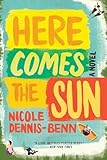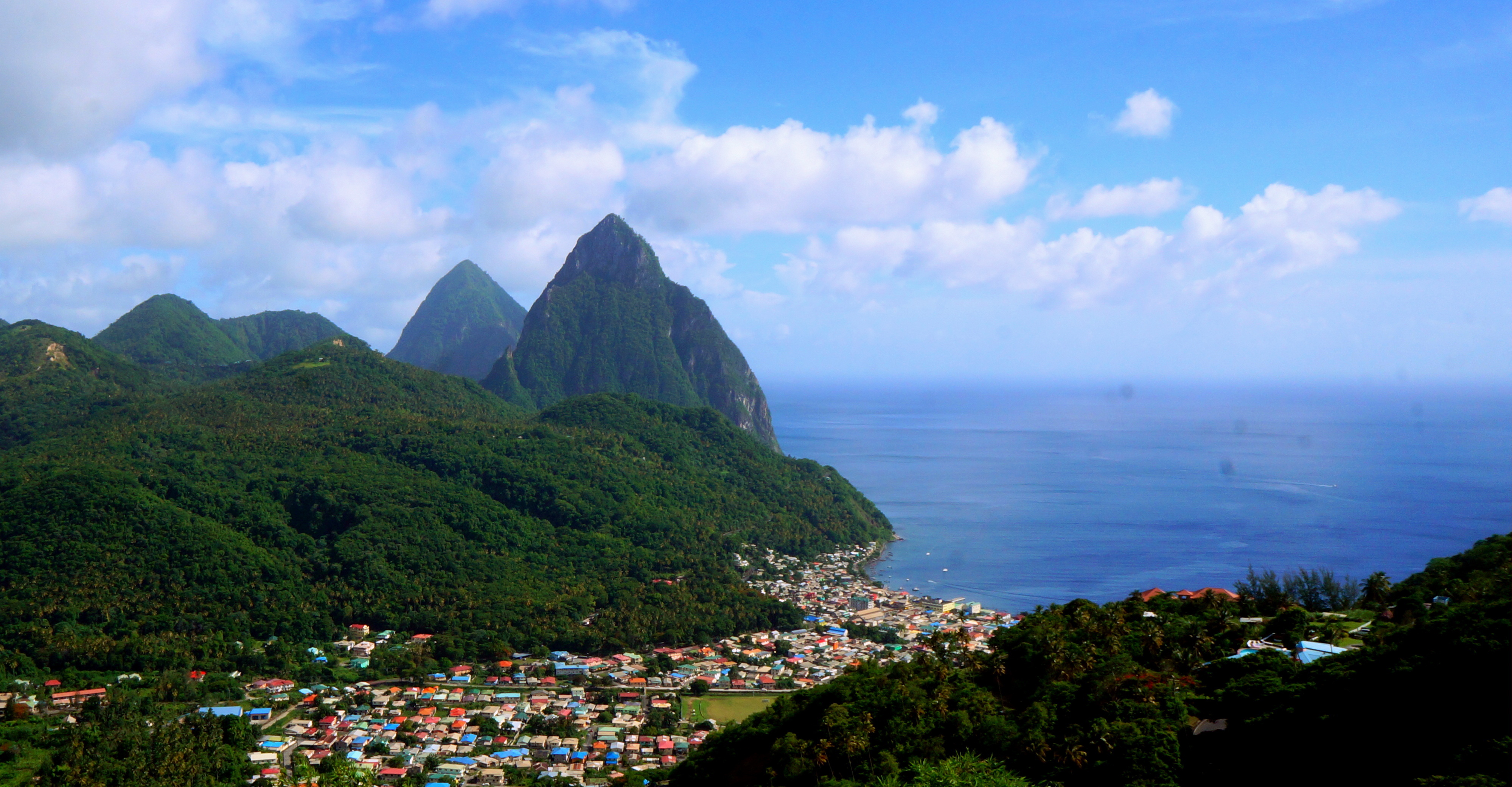Among the string of islands known as the Lesser Antilles lies St. Lucia, famous for the picturesque twin volcanic peaks—Gros Piton and Petit Piton—that rise sharply from the sea. Beyond the beaches and lush rainforests that draw tourists are the simple villages and remnants of a colonial past that inspired the Nobel Laureate Derek Walcott.
Reading Walcott’s poetry is akin to walking the streets of his childhood, beneath fragrant frangipani trees, brushing up against the hybrid languages and people. Walcott’s work—an ode to the island where he was born—is intimately tied to St Lucia.
Like Walcott, these four Caribbean writers celebrate their complicated homelands. Setting aside what’s been in the news of late—flippant, dismissive comments from politicians about Africa, Haiti, and by extension, the entire African diaspora—these four Caribbean writers take you to the heart and soul of Caribbean living, while tackling big issues—from natural disasters and their aftermath to mental illness and the underbelly of tourism.
Haiti
 Recent news cycle aside, Haiti today is remembered for the 7.0 magnitude earthquake that struck near Port-au-Prince, taking nearly 300,000 lives. Katia D. Ulysse’s Mouths Don’t Speak takes readers back to the earthquake and its aftermath. With no word from her parents following the earthquake, Jacqueline Florestant presumes her parents died and mourns their loss. She returns to Haiti, which she hasn’t visited since she left 25 years earlier. Seen through the eyes of an expatriate, the Haiti of Jacqueline’s childhood is no more.
Recent news cycle aside, Haiti today is remembered for the 7.0 magnitude earthquake that struck near Port-au-Prince, taking nearly 300,000 lives. Katia D. Ulysse’s Mouths Don’t Speak takes readers back to the earthquake and its aftermath. With no word from her parents following the earthquake, Jacqueline Florestant presumes her parents died and mourns their loss. She returns to Haiti, which she hasn’t visited since she left 25 years earlier. Seen through the eyes of an expatriate, the Haiti of Jacqueline’s childhood is no more.
Along with the destruction of the country of her childhood, Jacqueline struggles with her husband’s battles with post-traumatic stress disorder from his stint in the military, deception, and more deaths of the people around her.
Far from the brutal regimes of dictatorship—one of the stories we read so often about Haiti— Mouths Don’t Speak tells a story of Haiti we don’t always hear.
Barbados
 “The people on the hill liked to say that God’s smile was the sun shining down on them.” So begins Naomi Jackson’s Star Side of Bird Hill, which follows two New York girls sent to live with their grandmother in Barbados when their mother can no longer take care of them. The two sisters, age 10 and 16, experience the Bird Hill community and Barbados through the lens of their Brooklyn upbringing. And through that lens, the “sea explode[s] her sense of wonder, especially when the dense tree cover gave way to the blue-blue water lapping against the shore,” and the “sea got gobbled up by the hotels and resorts, only peeking out between openings in the concrete.”
“The people on the hill liked to say that God’s smile was the sun shining down on them.” So begins Naomi Jackson’s Star Side of Bird Hill, which follows two New York girls sent to live with their grandmother in Barbados when their mother can no longer take care of them. The two sisters, age 10 and 16, experience the Bird Hill community and Barbados through the lens of their Brooklyn upbringing. And through that lens, the “sea explode[s] her sense of wonder, especially when the dense tree cover gave way to the blue-blue water lapping against the shore,” and the “sea got gobbled up by the hotels and resorts, only peeking out between openings in the concrete.”
Before their exile, the girls are virtually on their own, with Dionne, the 16-year-old, standing in as mother to her younger sister. In Barbados, the girls are under the watchful eye of their grandmother, with Dionne trying to shake her grandmother’s grip and the younger Phaedra accompanying her grandmother—a midwife—to deliver babies and trying to get at heart of the mysteries of her mother’s life.
This coming-of-age story is a window into small-town island life and the interwoven lives of the many characters who inhabit Bird Hill.
Jamaica
 The Montego Bay where Nicole Dennis-Benn’s Here Comes the Sun is set isn’t your typical tourist destination. Yes, there is a glitzy resort set apart from everyday life in Montego Bay, where Margo works and carries on late-night trysts with male guests to make extra money. And there is River Bank where Margo’s sister and mother live—a different world altogether from the manicured lawns and lush gardens in the resort areas.
The Montego Bay where Nicole Dennis-Benn’s Here Comes the Sun is set isn’t your typical tourist destination. Yes, there is a glitzy resort set apart from everyday life in Montego Bay, where Margo works and carries on late-night trysts with male guests to make extra money. And there is River Bank where Margo’s sister and mother live—a different world altogether from the manicured lawns and lush gardens in the resort areas.
Here Comes the Sun is a look at what sisters, Margo and Thandie, believe it takes to break out of the societal constraints into which they were born. Margo trades her body for money, which she saves to pay for her sister’s education and save her from a life similar to her own. The younger Thandi bleaches her skin to achieve what she thinks is the epitome of beauty and success.
And it’s a study of the courage to love without restrictions, as well as the hidden lives of the many employees away from the glitz of the resorts.
Trinidad
 Lauren Francis-Sharma’s ‘Till the Well Runs Dry teems with forbidden love and the secrets that undo relationships. Sixteen-year-old Marcia Garcia meets a policeman, Farouk, of East Indian descent, who, in turn, seeks the help of an obeah woman to make Marcia fall in love with him. She does, but their marriage falls apart before it even has a chance to begin. Despite Marcia and Farouk’s failed marriage, they have four children together, and the children’s voices are an integral part of this family tale.
Lauren Francis-Sharma’s ‘Till the Well Runs Dry teems with forbidden love and the secrets that undo relationships. Sixteen-year-old Marcia Garcia meets a policeman, Farouk, of East Indian descent, who, in turn, seeks the help of an obeah woman to make Marcia fall in love with him. She does, but their marriage falls apart before it even has a chance to begin. Despite Marcia and Farouk’s failed marriage, they have four children together, and the children’s voices are an integral part of this family tale.
There are secrets, lots of them. Early in the novel, two children under Marcia’s care disappear without a trace. Not only is the fate of the two boys who could not have left on their own a mystery, but so is their parentage.
From Toco to Blanchisseuse, the villages are authentic places you can visit—from your armchair or in person—on Trinidad’s north coast. ‘Till the Well Runs Dry is a great primer of life near the north coast beaches.
Image Credit: Wikimedia Commons.










